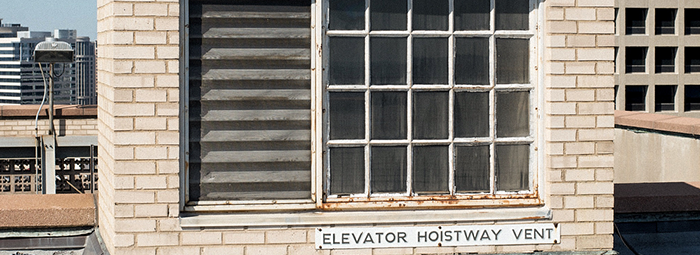
©2022 This excerpt taken from the article of the same name which appeared in ASHRAE Journal, vol. 64, no. 5, May 2022.
About the Authors
Kelley Cramm, P.E., is an associate and mechanical technical manager, and Brad Chambon, P.E., is a mechanical technical manager at Henderson Engineers in Lenexa, Kan.
Elevators are a staple in most modern buildings of more than one story. Chapter 30 of the International Building Code (IBC) and American Society of Mechanical Engineers (ASME)-A17.1 Safety Code for Elevators and Escalators both cover elevator requirements. The increased application of machine room-less elevators has resulted in confusion on how to apply code requirements when there is no machine room. This column discusses mechanical design considerations for elevators, code and ASME implications, and architectural coordination. It does not address elevators in high-rise buildings, which the IBC defines as “a building with an occupied floor located more than 75 ft (22 860 mm) above the lowest level of fire department vehicle access.”
Mechanical Design Considerations
Hoistway Venting
Please note that the following information on hoistway venting is taken from the 2012 International Building Code. The 2015 and later versions of the International Building Code do not include the section on “Hoistway Venting.” The 2015 commentary states the following:
“Hoistway venting was deleted, as it seemed counterintuitive to the need for enclosed elevator lobbies in the code. The provisions were historic in nature and were provided for the fire service, but they were no longer seen as necessary. In addition, the hoistway venting requirements often conflicted with the hoistway pressurization option for elevator lobby enclosures.”
You should always examine the specific code that applies to your project to determine if you are required to provide hoistway venting. Some local municipalities may be stricter than the IBC and may require hoistway venting with no exceptions. Many jurisdictions are still under the 2012 codes, which may require hoistway venting.
The purpose of hoistway venting is to allow smoke and hot gases to vent out of the elevator hoistway to the outside in the event of a fire. Contrary to popular belief, hoistway venting is not to allow the air to push and pull out of the hoistway due to piston effects so the elevator can operate correctly. If this were the case, the IBC would not allow exceptions. Note that hoistway venting requirements apply to traditional elevators with machine rooms and to machine room-less elevators.
Read the Full Article
ASHRAE Members have free access to the full-text PDF of this article as well as the complete ASHRAE Journal archives back to 1997 in the Free Member Access Area.
Non-members can purchase features from the ASHRAE Bookstore. Or, Join ASHRAE!
Return to Featured Article Excerpts
Return to ASHRAE Journal Featured Article Excerpts